Radbourne Hall: Inside the halls of a 'playful, magnificent, secret and rather magical place'
An award-winning restoration project has addressed serious structural problems at Radbourne Hall, Derbyshire, the home of Sir James and Lady Chichester. This important Palladian house has been brought back to life as a modern family home, as Oliver Gerrish reports. Photographs by Paul Highnam.

The visitor to Radbourne Hall today must struggle to believe that they are standing barely four miles from the centre of Derby. Set within a landscape park, laid out from 1790 by William Emes, this magnificent 1740s building answers the popular ideal of a Palladian country house. No less unexpected is the fact that this secret and rather magical place has recently undergone an award-winning restoration. In the process, its important historic interiors have been refreshed and the whole building revived as a 21st-century family home.
The present chatelaine of Radbourne, Lady Chichester, descends from the Chandos-Pole family, which can trace its connections with the estate back to the Middle Ages. In the mid 14th century, the soldier and founder member of the Order of the Garter, Sir John Chandos, began here — in the words of the antiquarian John Leland writing in the 1540s — ‘a mighty large house of stone with a wonderful cost’. Work to it was interrupted by his death, however, leaving the ruins of the building standing ‘to a man’s height’. This house clearly was intended to replace an earlier residence close to the parish church. It was disparagingly judged by Leland to be ‘no great thing’, but, in fact, remained in occupation until the early 18th century.
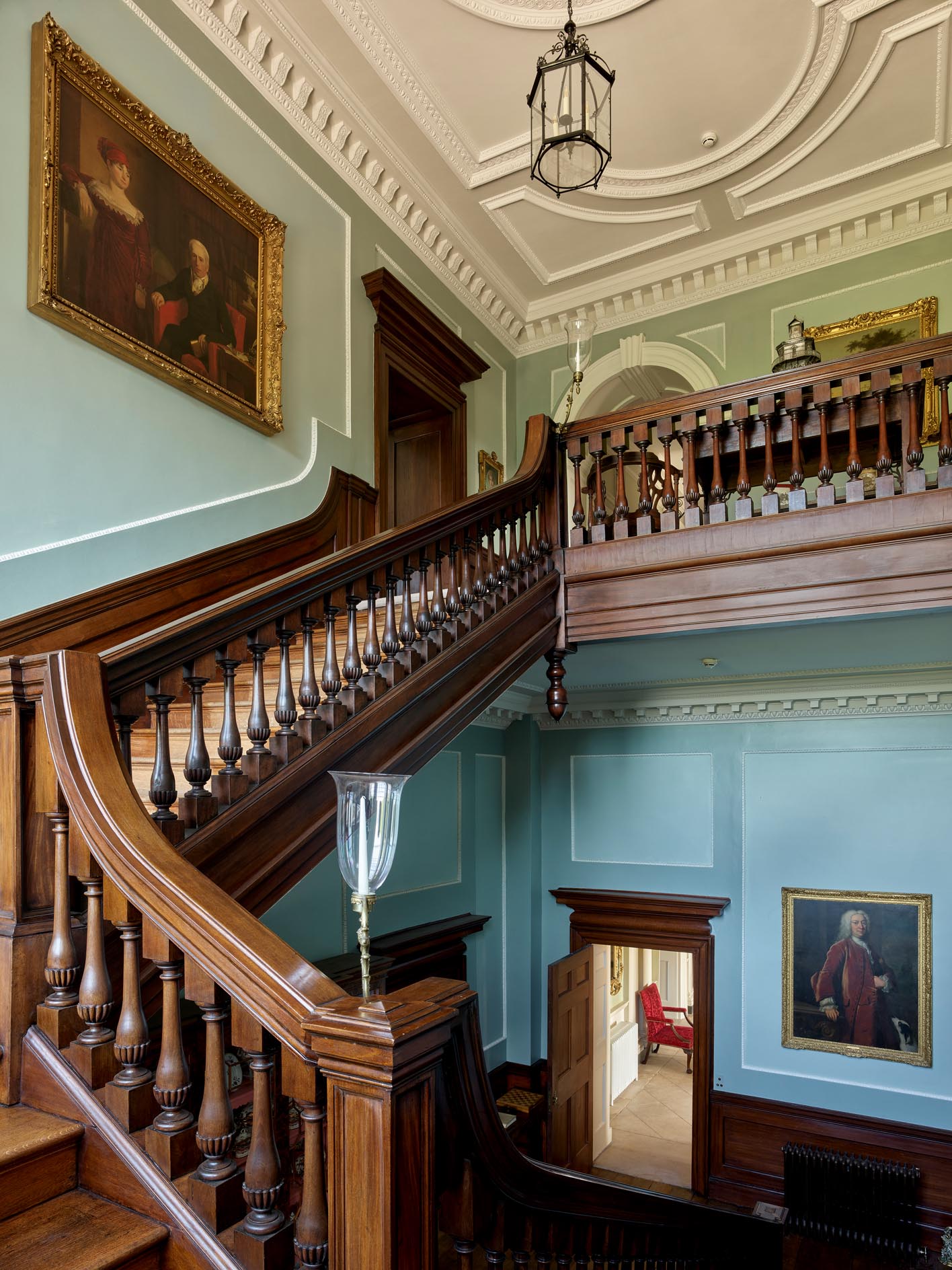
Sir John died childless and the property passed through his sister and the marriage of her daughter to the Pole family. It was German Pole, the Jacobite squire of Radbourne, who inherited the property in 1731 and began the present house. Pole was nearly 50 by the time of his inheritance and we know surprisingly little about him. His development of Radbourne was probably intended to bolster his political ambitions in the county, where he served as high sheriff in 1733 and again in 1735.
It is possible that Pole initially employed the architect Francis Smith of Warwick, who died in 1738, to design the house. Certainly, Radbourne adopts the first-floor plan of an unexecuted house at Clifton Campville, Staffordshire, that Francis designed around 1720. More certainly, Francis’ son, William, who inherited his father’s practice, worked here. His involvement is recorded in the early 19th century, when a later member of the Chandos-Pole family with access to lost papers noted that, in 1745, ‘Mr Smith completed the house for £500 under the estimate, which he had the honesty to return’.
The date when the house was commissioned may be uncertain, but a surviving steward’s account book shows that it was well under way by 1741–42. The book records the names of several specialist craftsmen involved, including the Derby master stuccodore Abraham Dentsone the elder, who was paid a total of £55 for his work, the joiner George Eborall, notable Derby cabinetmaker John Trimmer, the clockmaker John Whitehurst FRS of Derby and brickmaker Michael Bates.
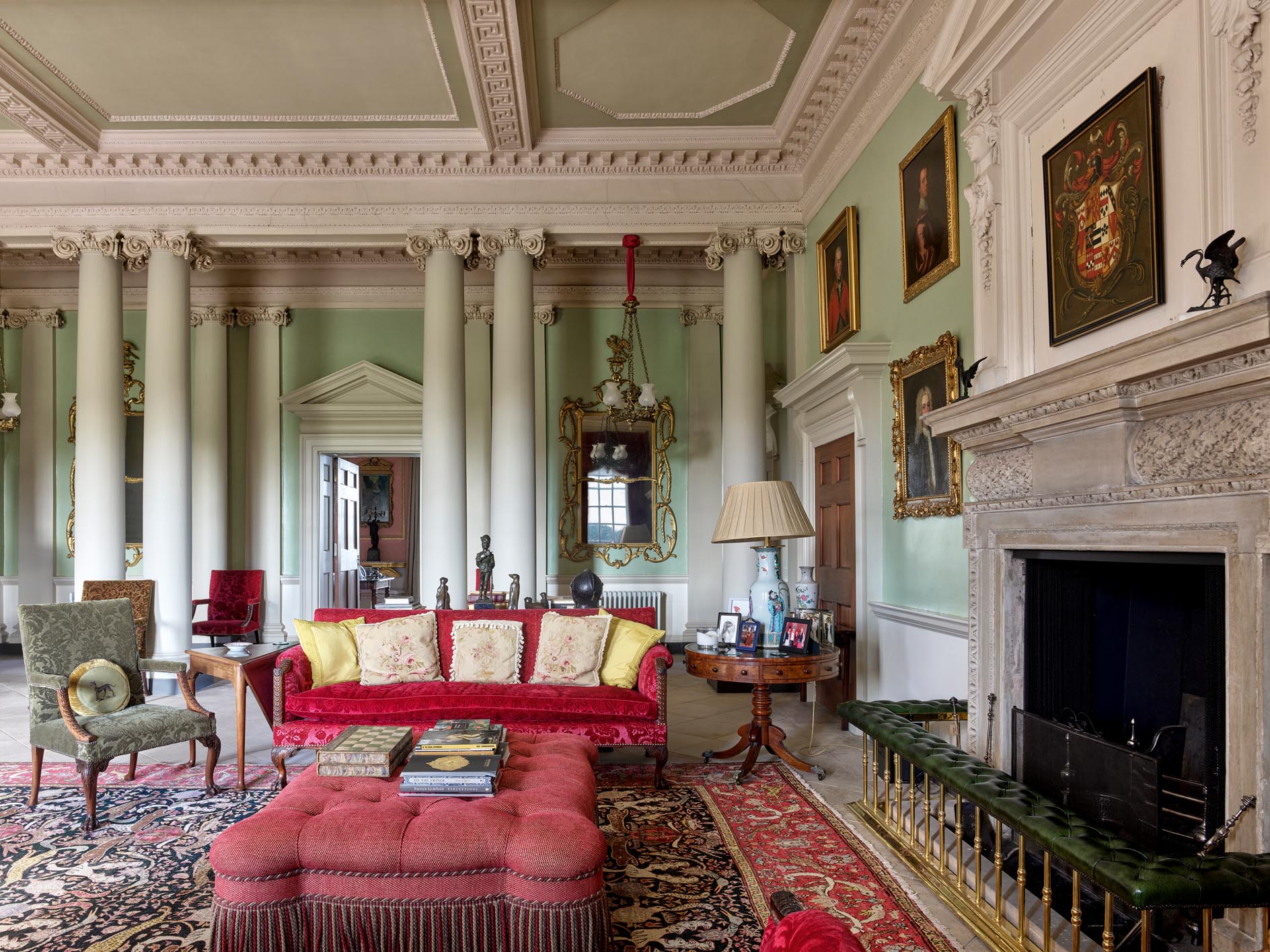
Much of the steward’s book is otherwise revealingly taken up with receipts signed by pub landlords for the provision of food and drink for voters in the 1742 Derby election, in which Pole unsuccessfully stood as a Tory. His lost cause and 300 votes cost him £183 11s 6d at some 20 hostelries, a reminder of the realities and expense of 18th-century politics.
Throughout the period of construction Pole presumably occupied the old house. When the building work was finished, however, this was abandoned and James Pilkington, in his A View of the Present State of Derbyshire (1789), describes it as a ruin. The site of this building can still be identified from an early estate survey, but what remains uncertain is where Sir John’s house stood. Might the Palladian house occupy its site?
Exquisite houses, the beauty of Nature, and how to get the most from your life, straight to your inbox.
Externally, Radbourne is a sober building constructed of local red brick with dressings of Keuper stone probably from nearby Kirk Langley (the quarry was said to have been purchased for the purpose). The building rises from a basement level faced in ruggedly finished or rusticated stone. This ground floor has its own side entrance and probably incorporated a combination of family and service rooms (Fig 5). An exceptionally broad two-stage flight of steps forms the approach to the main entrance hall from the south (Fig 1).
In typical Palladian form, the principal rooms are arranged on the first-floor level around the entrance hall. To identify this externally as the piano nobile, the windows are enriched with pediments of alternating shape. These windows are also substantially larger than those on the floor above, which comprises bedrooms. Monumental pediments crown the house to the front and back, the former bearing the quartered arms of Pole carved by Henry Watson of Heanor.
Until 1958, there was also a large service wing off the north-eastern corner of the house. It was probably an addition of the late 18th century, but was extended and remodelled in about 1865 and incorporated rooms for visiting bachelors, as well as, reputedly, a ballroom. This wing was removed in the late 1950s as part of wider changes to the property directed by the architect Frank Scarlett with Sir William Baird and Partners for Maj and Mrs Chandos-Pole, parents of the current owner.
Radbourne’s interior is playful and magnificent in a way the chaste exterior is not. The entering visitor is confronted by a screen of paired ionic columns at the far side of the central hall (Fig 3). This frames the entrance to the saloon beyond and defines a corridor that connects the principal (Fig 2) and back stairs to either side of the building. The hall ceiling is coffered and the walls are treated in an architectural fashion, with pediments surmounting both the overmantel of the Hoptonwood Marble fire surround and the niche in the wall opposite. Hoptonwood Marble, a great favourite for Derbyshire country houses, was also used for the floor.

The saloon (Fig 4) beyond the hall is unquestionably the most splendid room in the house, its interior made memorable by the paintings it contains. These were commissioned in the 1770s by German Pole’s nephew and heir, Col Edward Sacheverell Pole, who had succeeded his uncle in 1765. The entrance wall displays two large canvases by John Hamilton Mortimer of Belisarius and Caius Marius amid the ruins of Carthage, each of which cost 100 guineas. Rather more memorable is the series of paintings by Joseph Wright of Derby commissioned in 1771–72. These include four small, but exquisite, over-door paintings of scenes in candlelight, for which Wright was paid 30 guineas.
Wright also painted the two fine portraits that face each other across the length of the room. At one end, in the overmantle of a chimneypiece inspired by the work of the 17th-century architect and father of English Palladianism, Inigo Jones, is Col Sacheverell Pole in armour, surely a surprising detail for an English portrait of this date and a mark of the strong military tradition in the family from at least the 17th century. At the other is the colonel’s wife, Elizabeth Pole, with their son, also Sacheverell.
Elizabeth was later widowed and went on to marry Erasmus Darwin, a member of the celebrated Lunar Society, who lived at Radbourne from 1781 to 1783. Incidentally, Elizabeth may have been the driving force behind the creation of the Radbourne saloon. She was far more artistically minded than her husband and her half-sister, Caroline, Lady Scarsdale, who was the chatelaine of nearby Kedleston Hall.
Opening off the hall at the south-west corner of the house is the library. This was evidently re-worked in the late 18th century when, in conformity with changing tastes, the deep coves of the original ceiling were removed to create a more box-like interior. It’s likely that the architect responsible was Joseph Pickford of Derby, who may have designed the now-demolished north-east wing, too.
The drawing room in the north-west corner of the main floor properly introduces the work of the designer John Fowler, who made important mid-20th-century decorative changes throughout the house. He was recommended to Maj and Mrs Chandos-Pole by Nancy, Lady Bagot of Blithfield Hall, and worked at Radbourne between March 1958 and July 1960. In this room he added only the present pelmets and curtains, but his hand is widely visible in the house and particularly in the beds and furnishings throughout the bedroom floor.
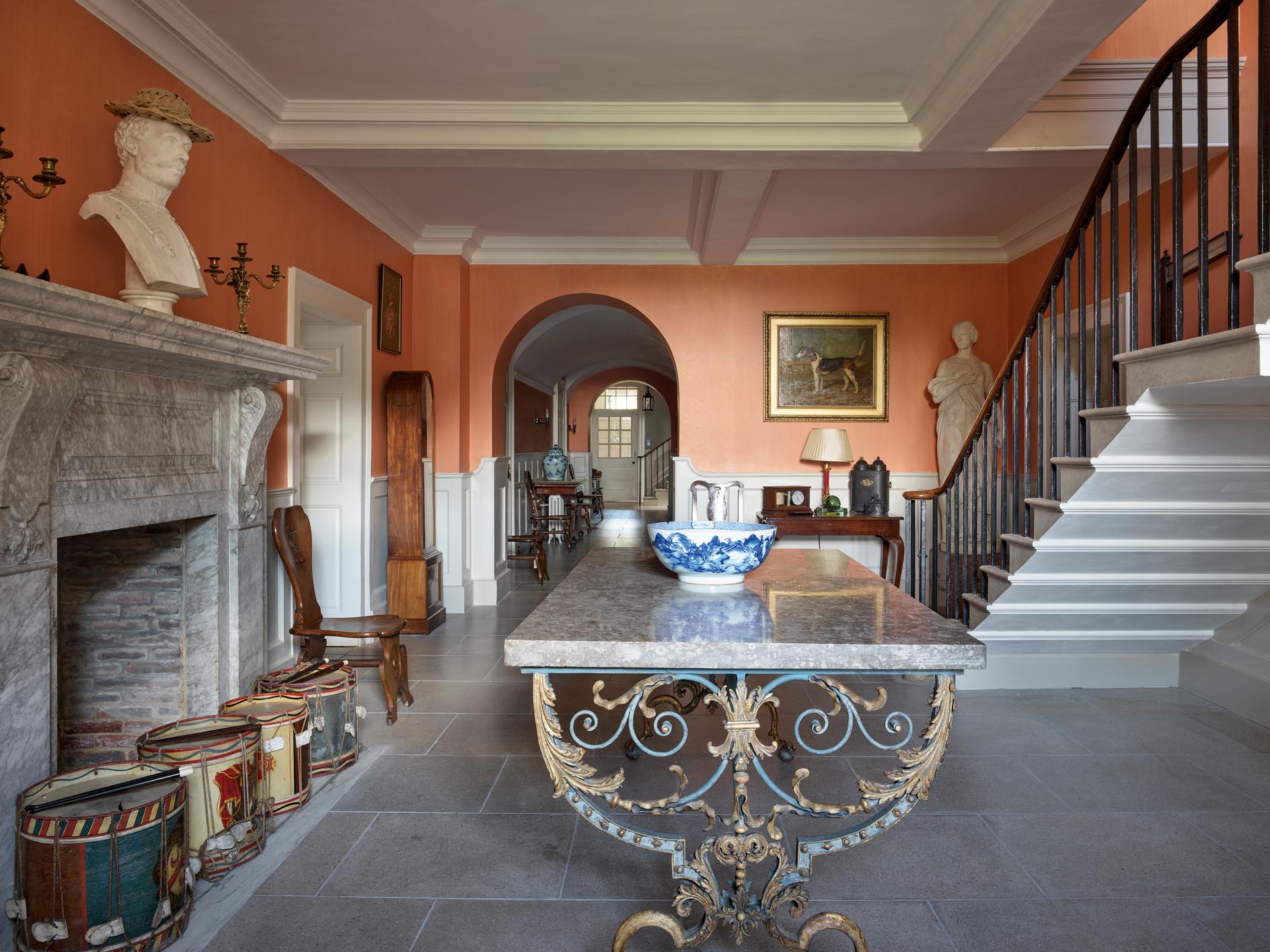
The recent restoration of the house, overseen by Peregrine Bryant Architects, came in the nick of time. Following the death of the late Mrs Chandos-Pole in 2014, at the age of 102, the responsibility of managing the property passed to her daughter, Lady Chichester. By the time she became chatelaine of the hall, which is held in trust, the work that her parents had undertaken to restore the house in the late 1950s was itself beginning to fail. Particularly alarming was the sagging of the hall ceiling caused by the movement of a structural steel.
From 2017 to 2020, therefore, the whole house underwent far-reaching repair and conservation work. This has included re-roofing, the insertion of firebreaks and breathable wood fibre insulation, new services, rewiring, and structural repairs to preserve the hall ceiling. In the same period, all the main rooms have been redecorated and restored and the whole house has been strikingly re-hung with the advice of Harry Moore-Gwyn. The present hang combines two family picture collections, one belonging to the house and the other from the Chichester family seat at Youlston, Devon.
Connected to this thoughtful redisplay of family heirlooms is a large walnut-veneer china cabinet, which was made locally by Wheathills. This stands in the main stair hall and was specially commissioned to make possible the display of family porcelain and Jacobite glass that would otherwise necessarily sit hidden in cupboards.
Underlying the whole project, however, has been the intention to make Radbourne liveable as a modern family home. A new kitchen occupies the former dining room in the south-eastern corner of the first floor. The late Mrs Chandos-Pole had already changed this room to its current use, but Lady Chichester has taken a contemporary approach to the interior, which is both a kitchen and an informal living and work space. A new island is topped with walnut and, on the other side, Caesarstone quartz.
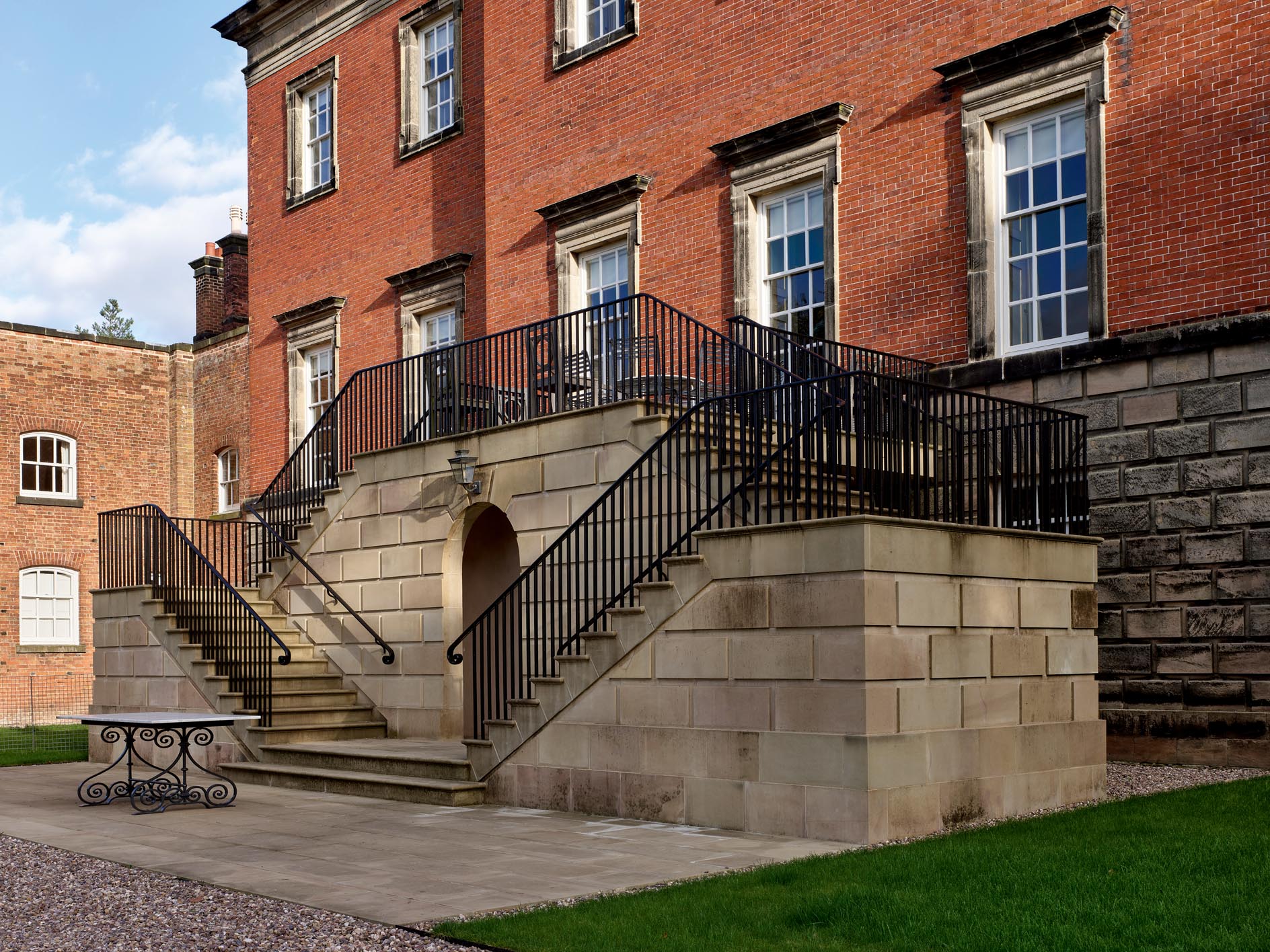
Perhaps the most important physical change, however, has been the addition of a new flight of steps to the rear of the house (Fig 6). The aim of these was both to connect the main rooms on the first floor of the house directly with the garden below and also to create a balcony opening off the saloon. It was insisted by the planning authorities that the new stone steps could not touch the existing building, so the whole structure is, in fact, cantilevered and there is a tiny 0.8in (20mm) gap between the upper landing and the building itself. Stanton Moor Ashlar was used for the structure of the new stair and the treads are Woodkirk stone. A tiny LED strip comes on after dark to light the descent.
Another important theme of the project has been to restore the surviving elements of the Fowler scheme, which have been carefully conserved. By happy coincidence, the 21st-century team enjoyed remarkably direct connections with those who had been involved here in the 1950s. Fiona Lansdowne, who advised Lady Chichester on the colours and interior design in the house, had worked at Colefax & Fowler for Imogen Taylor. She, in turn, had worked on Radbourne with Fowler. It even proved possible to have replacement curtains made by one man who had worked for Fowler’s original curtain-maker.
Awards from the Georgian Group, Historic Houses and the Derbyshire Historic Buildings Trust have heaped well-deserved praise on the restoration of Radbourne Hall. Lady Chichester has been asked why she took on this huge task. She answered that she wished to ‘restore the fabric of the house, bring it into the 21st century, keep as much of John Fowler’s work as possible and, most importantly, to make it a home and preserve it for future generations’. She has surely done exactly that.
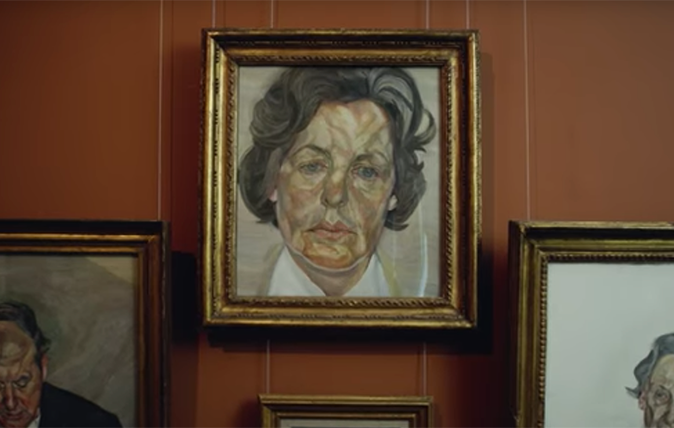
The Lucian Freud portrait that ‘is probably the most beautiful thing at Chatsworth’
A new series of mini-documentaries is looking at some of Chatsworth House's many treasures – starting with a painting that
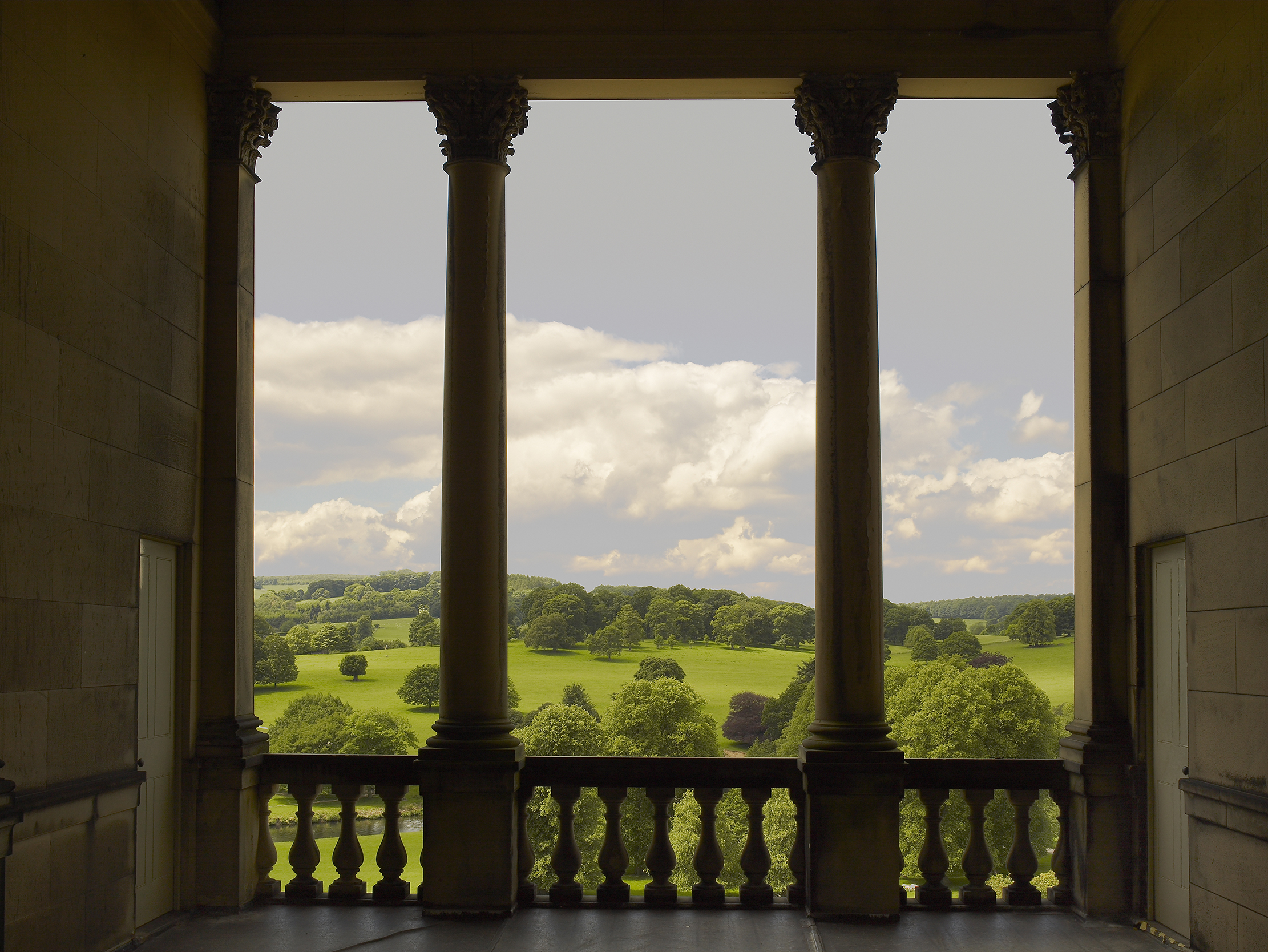
A look at Chatsworth, the 'toy box' of delights where 'your head becomes dizzy with the richness of it all'
We take a look at some of the magnificent images of Chatsworth which have graced the pages of Country Life
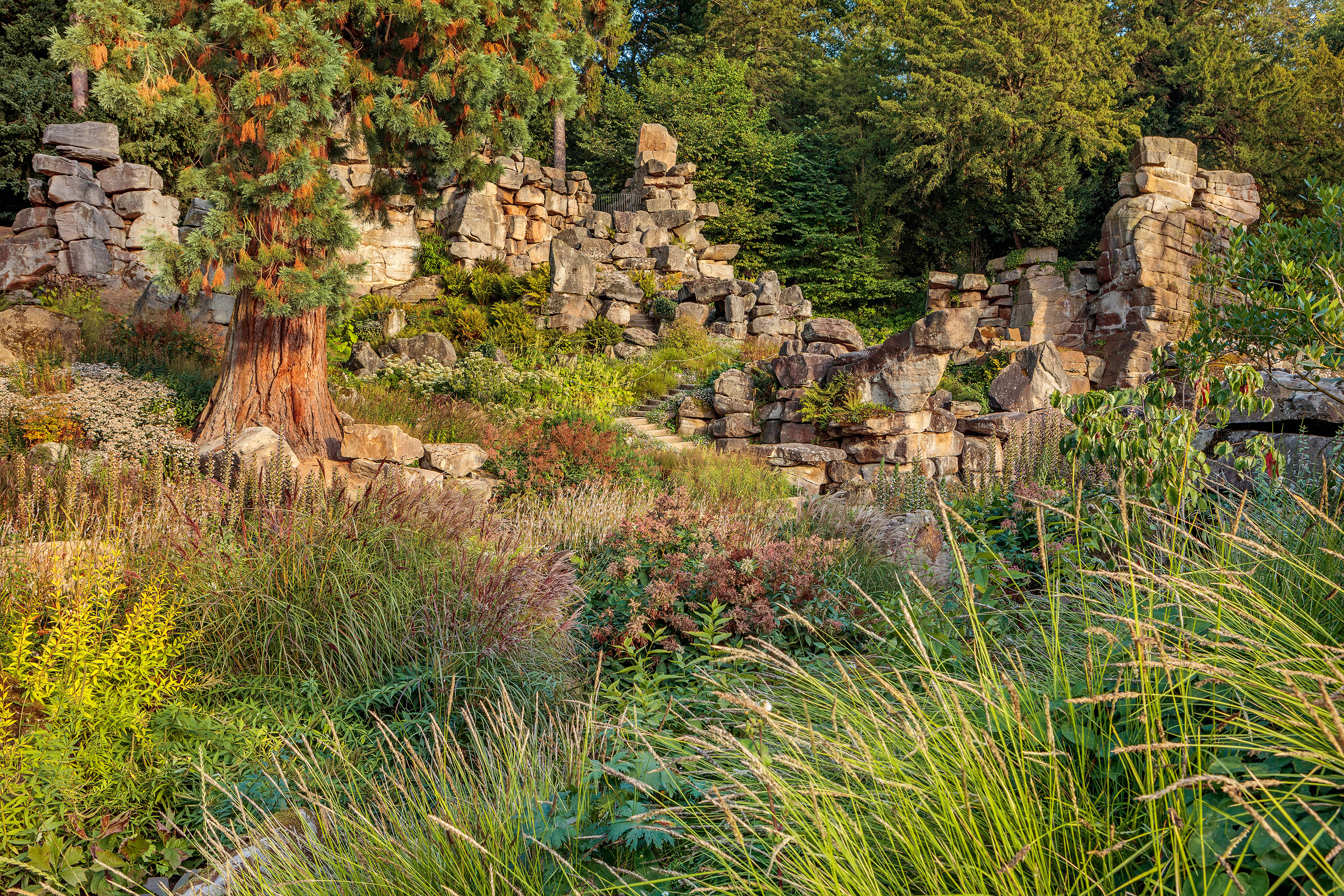
The revival of Chatsworth's great wooded bank: 'A mountainous place of woods, springs and birdsong'
It has taken three years and more than a quarter of a million plants to bring brilliant new life to